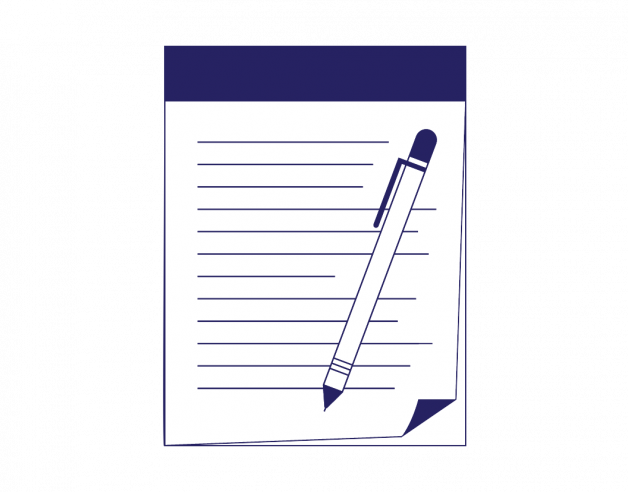
- 5-minute read
- 23rd May 2023
A Simple Guide to Reflective Writing
Reflective writing is the process of describing something you’ve experienced, evaluating its meaning, figuring out if you’ve learned anything from the experience, and then working out how the process can be beneficial.
Many people don’t know how to write reflectively or what’s required in the process.
This post will explain what reflective writing is. We will then show you how to organize and structure your own reflective writing in a simple and straightforward manner.
What Is Reflective Writing?
It’s a common belief that we can break down thinking into two processes: reflective and critical. The former can be part of the latter, but it’s more personal.
Reflective thinking, or a reflection, is a learning process that involves your own personal analyses of and responses to new situations, experiences, data, or events. There is no right or wrong way to think reflectively – it’s more about exploring different ideas and questions.
Reflective writing is a way to reach a deeper level of understanding on a given topic. Writing something down can help you analyze it.
Here are some common elements of reflective writing:
● Analytical
● Subjective (thoughts/opinions)
● Free-flowing
● Written in the first person
And here are some examples:
● A personal response to something new
● Field notes, journals, logbooks, peer reviews, blogs, etc.
What Is Nonreflective Writing?
While the goal of reflective writing is to come to a deeper level of understanding about a given topic, the goal of other forms of writing is often to explain, argue, or describe something in detail.
These are some elements of nonreflective writing:
● Objective (instructions/arguments)
● Structured formally
● Written in the third person
Here are some examples:
● An explanation or argument
● Research papers, statistical reports, persuasive essays, formal reviews, news articles, etc.
How to Write Reflectively
Because reflective writing is subjective, its structure is usually less formal. While being logical is important, you can also be creative, hypothetical, and opinionated.
A few different formats can help show you how to organize your reflective writing, but we’ll focus on a popular four-step approach that we often refer to as the DIEP strategy:
- Describe
- Interpret
- Evaluate
- Plan
1. Describe
You begin by simply describing everything that happened. This includes what you did, saw, heard, etc.
This description should be the shortest portion of your writing, but it should include all the details you think are relevant.
Find this useful?
Subscribe to our newsletter and get writing tips from our editors straight to your inbox.
2. Interpret
The next step is to consider what the experience meant to you. Here, you can explore how and why something happened.
Some useful questions to ask yourself during the interpretation stage are:
● How do I feel?
● Have I acquired any new insights?
● How does this experience connect with what I already know/believe?
● What hypotheses or conclusions can I form?
3. Evaluate
This is where you analyze how valuable the experience was and consider why it happened. You should make judgments that are connected to the observations you’ve previously described and interpreted.
Here are some important things to examine at this stage:
● Focus on the most important things you’ve observed or learned.
● Identify the significance of any hypotheses or conclusions you’ve formed.
● Examine whether you’ve developed any new skills that you can apply in the future.
4. Plan
Finally, you need to figure out what you’ll do with what you’ve learned and how you’ll do it. Come up with a plan to make any newly discovered information useful to yourself.
A few good questions to answer are:
● Will my future behavior change based on what I’ve learned or experienced?
● Why will this change occur, or why won’t there be any change?
● What will I do next?
● Do I need to acquire or develop any new skills to enact my plan?
Extra Tips
Although beginning a piece of reflective writing can seem daunting, if you follow the four steps we’ve outlined above, it shouldn’t be too difficult. Just remember that it’s all about your observations and what you have (or haven’t) learned from a given experience.
The format for reflective writing can often be less strict, but you still want your writing to be readable. Here are a few things you should make sure to do:
● Write from your own perspective.
● Clearly outline the context of what you’re reflecting on.
● Make sure your writing is structured well, with a beginning, a middle, and an end.
● Use an appropriate writing style and ensure correct grammar and punctuation.
What Can I Do If I Need Help?
If you’re not confident in your overall writing ability, don’t worry. A professional proofreader can check your grammar, spelling, and punctuation. They can identify and correct errors and provide you with valuable feedback to help you improve.
Great proofreaders are not hard to find. A simple way to do so is to visit Proofed’s online platform. You’ll get any document you submit to us returned within 24 hours.
We’ll even proofread your first document for free!






